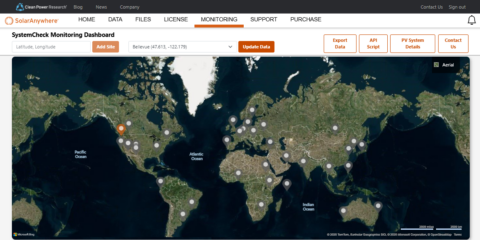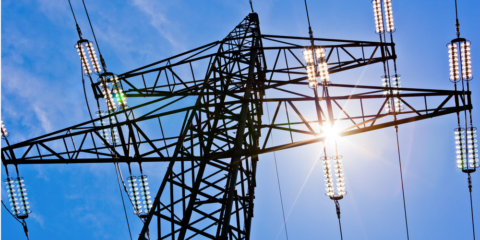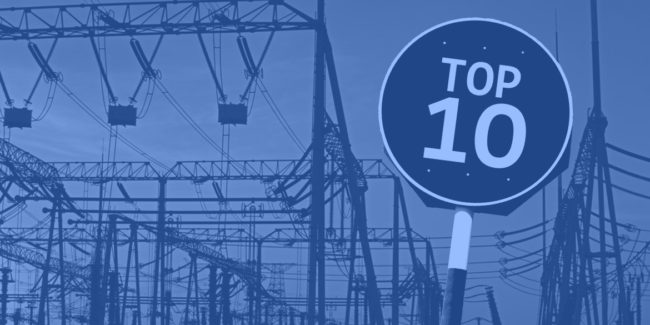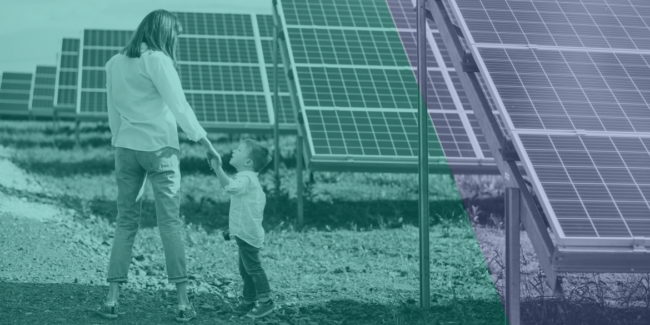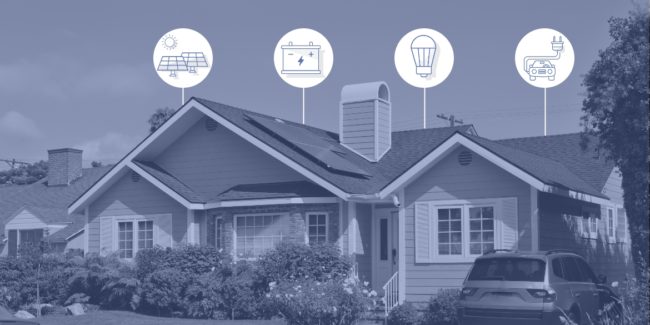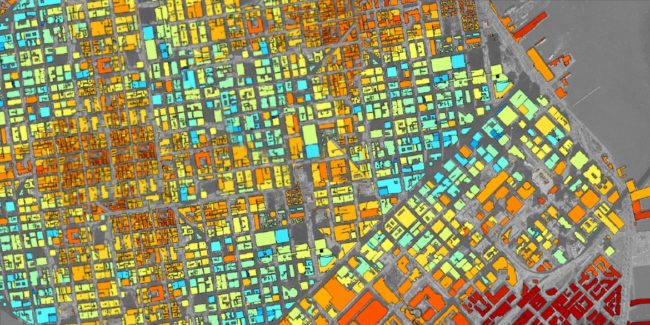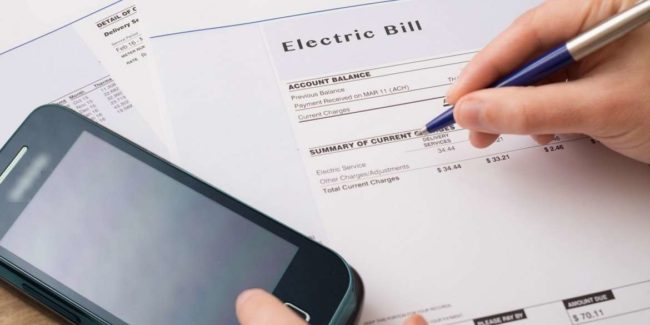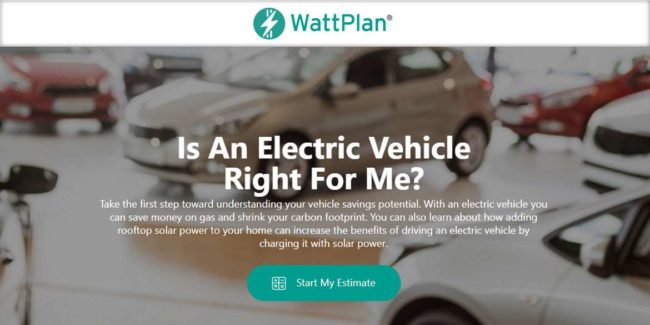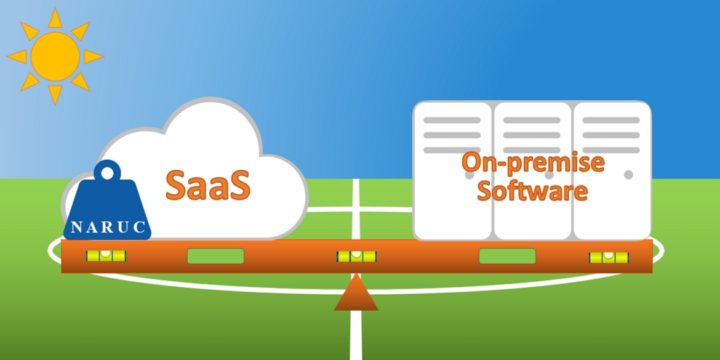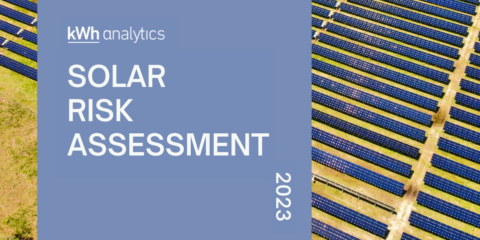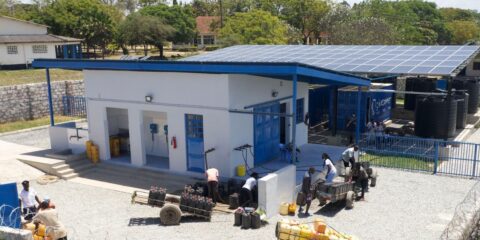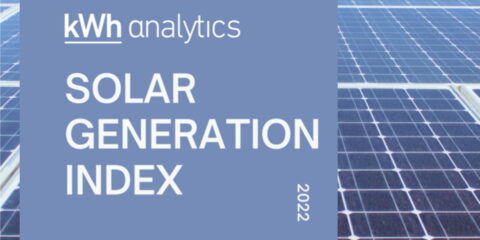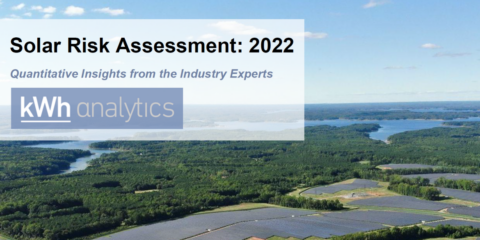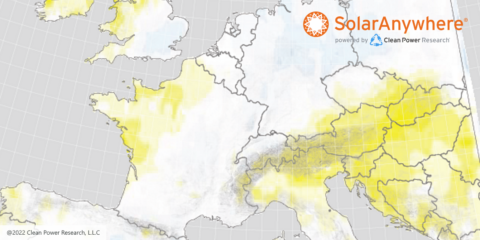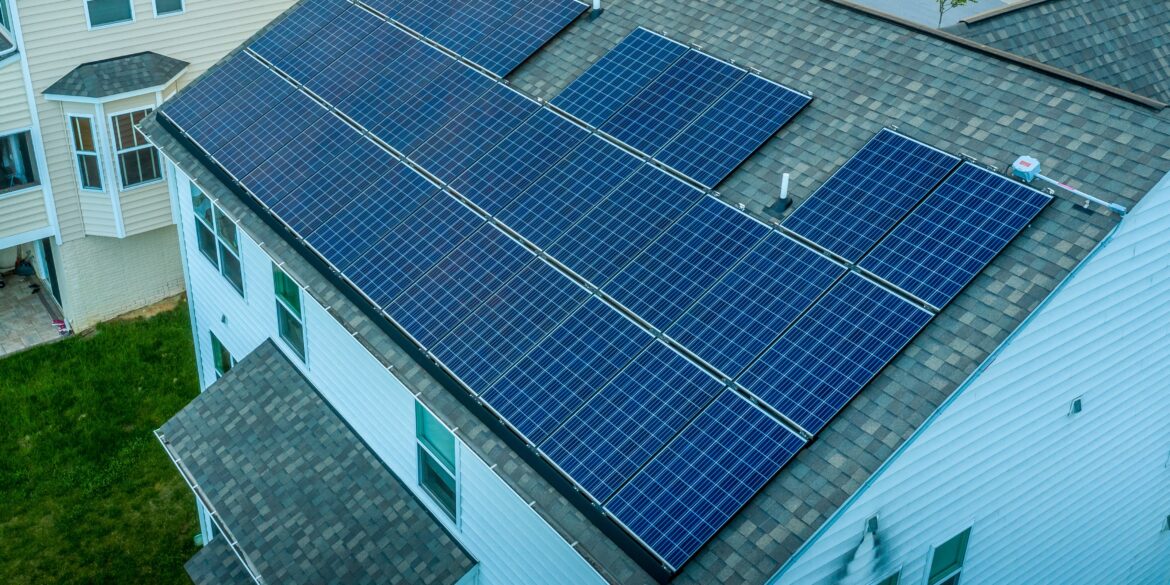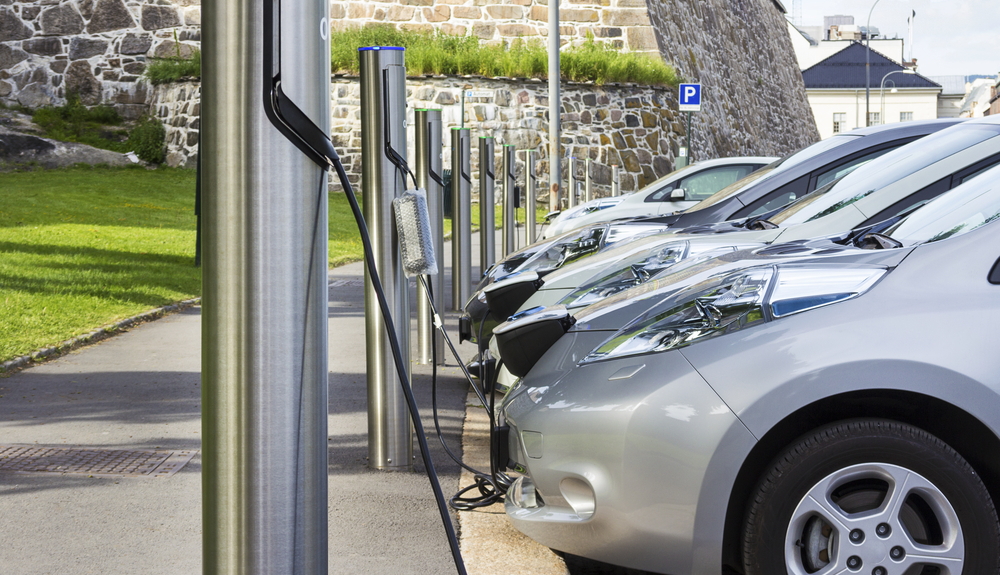No Results Found
The page you requested could not be found. Try refining your search, or use the navigation above to locate the post.
No Results Found
The page you requested could not be found. Try refining your search, or use the navigation above to locate the post.
Unlock the power of real-time solar data: New SolarAnywhere® dashboard
Clean Power Research® is excited to unlock the power of real-time solar data for more users with the launch of the SolarAnywhere® SystemCheck® Monitoring Dashboard. Users can now access and visualize SystemCheck real-time irradiance data directly...
WattPlan® helps 1 million utility and energy agency customers make smart energy choices
WattPlan has now helped more than 1 million utility customers make informed decisions about their renewable energy, rate plan and clean transportation options. This is a significant milestone for WattPlan, a leading utility solution for automated clean energy and...
2024: Broader and deeper with utilities and their programs
On behalf of the entire team at Clean Power Research, I wish our utility and energy agency customers a happy New Year and thank you for a great 2024! In my year-end review for 2023, I mentioned that we were excited to have reached two new milestones: 14 of the top 15...
Preparing utilities for future customer electrification programs
Electrification programs offered through state and local organizations are changing the U.S. electric utility landscape and reshaping demand side management (DSM) programs. Increased complexity, ever-changing baseline efficiencies, and the shifting focus from MWh to...
How utilities are effectively streamlining electrification and home performance rebate programs
As the demand for clean energy intensifies, utilities and energy agencies face increasing pressure to meet ambitious sustainability targets while maintaining operational efficiency. Electrification and home performance rebate programs have become essential tools for...
Enhancing precision with new SolarAnywhere® sub-hourly TMY data
Clean Power Research® is thrilled to announce the launch of SolarAnywhere® Sub-Hourly Typical Meteorological Year (TMY) irradiance and weather data! This feature provides SolarAnywhere customers with sub-hourly data, enhancing the precision of solar resource...
PowerClerk®: The preferred choice over SaaS giants for utility program management
As a Salesforce cofounder, I’ve been involved in engineering SaaS solutions for many years. I believe that traditional, comprehensive platform-oriented cloud and hybrid approaches, including those from SaaS giants, are often not the best option for utility and agency...
Solar for All: Best practices for designing effective solar programs
The Solar for All initiative has awarded $7 billion in federal funding to states, cities, territories and tribes across the U.S. The funding is being used to design and implement solar programs that directly benefit communities, with a focus on low-income and...
Reducing interconnection backlogs amid growth in utility-scale electric generating capacity
The U.S. saw utility-scale electric generating capacity increase by 21% during the first half of 2024 compared to the same period in 2023. Most of the new capacity came from utility-scale solar, wind and battery storage. According to the U.S. Energy Information...
All top 10 U.S. utilities trust Clean Power Research
At Clean Power Research, we think of ourselves as a modestly sized company doing big work. We are a passionate team of engineers, scientists and customer-obsessed service professionals focused on delivering world-class software solutions to utilities and the solar...
Three keys to unlocking DER program management excellence
A question we often hear from utilities is: “What makes an effective distributed energy resource (DER) program management solution over the long-term?” The question is often rooted in concern for making the best choice between developing an in-house solution or...
PowerClerk Dashboards deliver key data visualization capabilities to energy program managers
Advancements in data visualization reporting tools are helping companies make sense of ever-increasing data volumes and complexity. The right tools help increase efficiency and make data visualization more approachable for all users. Improved application design has...
As community solar grows, scaling customer engagement is critical
Solar energy production is booming in the United States. According to the EIA (U.S. Energy Information Administration), “U.S. solar generation has increased from 2 million MWh in 2008 to 96 million MWh in 2018.” The growth of solar has coincided with the proliferation...
Move beyond worst-case distribution planning with DER adoption forecasts and probabilistic planning
Distribution engineers today are responsible for designing the future of a critical infrastructure system, yet uncertainty pervades the process. Traditional methods of load forecasting and system planning are becoming less tenable due to the growth of distributed...
Strategies for managing multiple DER programs
In spite of the industry definition of distributed energy resources (DERs) continuing to evolve, consumers are increasingly adopting DERs—often more than one. This means that for utilities, DER program management such as interconnection doesn’t end at “permission to...
PowerClerk®: The proven solution for more than one million DER applications
The past two years have seen key milestones for distributed energy resource (DER) adoption in the U.S., including: Passing one million total residential solar installations in 2017. All solar generation (including residential, commercial and utility scale) in 2018...
Make the most of your DER interconnection data: virtual metering
In a previous blog post, we detailed the responsibility of distributed energy resource (DER) interconnection managers to capture DER system specifications for their system planners and distribution engineers. Since then, even more U.S. utilities have turned to...
Change is a constant: why agile software development fits today’s utility
As a developer of software for utility companies, we're frequently asked for information about integrating PowerClerk®, WattPlan® and SolarAnywhere® into utility processes. Often these requests include long lists of questions about product features and pricing, as...
Why WattPlan Grid: Planning for DER adoption
Eight months ago, Clean Power Research and the Sacramento Municipal Utility District (SMUD) formed a unique partnership to solve the critical challenge of planning for DER adoption. In the words of our partners at SMUD, this new DER planning software—called WattPlan®...
Residential rates: Can utilities increase customer satisfaction while decreasing peak load?
Recently, utilities have been turning to residential time-of-use and demand rates to send customers better pricing signals. But the question remains: Will these new residential rates succeed in changing customer behavior? What happens to customer satisfaction?...
Utilities with industry-leading customer satisfaction use WattPlan
The 2017 J.D. Power Electric Utility Residential Customer Satisfaction StudySM results are in, and utilities that rank highest not only provide excellent reliability and rate options, many of them are also taking advantage of online engagement tools to improve the...
Why EV strategy is important for utilities: SMUD’s story
Electric vehicle (EV) adoption is increasing, and utilities are taking notice. In a May 25, 2017 webinar, “Shifting Utility EV Strategy into Drive: Best Practices and Lessons Learned1,” Thor Hinkley, EV senior program consultant at CLEAResult, pointed out that nearly...
MN Solar Pathways: Illuminating pathways to 10% solar
On March 30, 2017, the Minnesota Department of Commerce along with its core team, kicked off its Department of Energy-funded MN Solar Pathways project aimed at finding the least-risk, best-value solutions for MN to achieve its solar energy goals. Clean Power Research...
Can a simple model predict future PV adoption? (Yes—if done right)
Utilities across the U.S. are eager to know how much PV their customers will adopt, as this adoption can impact both revenues (from reduction in energy purchases) and costs (linked to distribution operation and intermittency mitigation). Having seen the explosive...
Can Hawaiian Electric convince customers to invest in solar and battery storage without pushing them off the grid?
As of September 2016, all three Hawaiian Electric Companies (HECO, MECO and HELCO) had reached the Public Utility Commission’s (PUC) Customer Grid-Supply program limit. Now, Hawaiians interested in installing rooftop solar will want to consider installing battery...
2017: The year of the long range EV
In 2016, electric vehicle (EV) sales grew 37% and utilities initiated strategies for dealing with that growth. Six utilities and state energy agencies now use WattPlan® to provide customers with personalized and objective guidance to their EV related questions....
NARUC aims to level the playing field for cloud software
In November 2016, the National Association of Regulatory Utility Commissioners (NARUC) approved a resolution encouraging State regulators to level the playing field for cloud software and on-premise software. Why is this resolution critically important for utilities?...
SolarAnywhere® Data accuracy independently validated by Fraunhofer ISE
While weather data is just one of many inputs into PV modeling tools, data accuracy plays a key role in reducing PV project uncertainty and risk. As a result, we frequently are asked “How accurate is SolarAnywhere® Data?” This is a question we take seriously. In fact,...
kWh Analytics’ Solar Risk Assessment 2023: Industry insights to support sustained solar growth
According to the fifth annual edition of kWh Analytics’ Solar Risk Assessment report, the solar industry is forecast to build as much solar capacity in the next five years as the prior twenty years combined. That’s a remarkable outlook for the future of solar. While...
Enabling the future of solar: Bifacial PV modeling takes center stage in SolarAnywhere API, powered by industry-trusted pvlib models
According to the World Energy Outlook report by the International Energy Agency (IEA), global annual solar PV capacity growth is expected to more than quadruple in 2030 to 650 GW. Nearly 50% of the global solar capacity is slated to come from utility-scale...
Case Study: Learn how GivePower® uses SolarAnywhere® to optimize Solar Water Farms for underserved communities
We’re always excited to hear about the projects our SolarAnywhere® clients are working on, but GivePower® is truly inspiring. GivePower® designs and installs life-changing Solar Water Farms that can produce up to 75,000 liters of safe water per day—for up to 20...
Solar Generation Index 2022: Continued P50 underperformance of 7-13% highlights need for accurate data and greater transparency
Despite continued supply chain disruptions in 2022, the U.S. solar industry’s outlook appears strong with the passage of the Inflation Reduction Act (IRA). SEIA and Wood Mackenzie have increased their U.S. solar deployment forecast, expecting the industry...
Implicit storage continues to gain support to enable renewables to deliver firm power, cost effectively
With solar and wind providing a greater percentage of electricity, managing the intrinsic intermittency of variable resources is becoming increasingly important. How do we overcome this intermittency? Answering this question has been the focus of an international...
2022 Solar Risk Assessment Report: Expert insights into key risk factors impacting solar assets globally
Although 2021 marked the third year in a row that solar represented the largest share of new generation capacity in the U.S., continued supply chain constraints, tariff investigations and inflation all pose uncertainty for 2022 project development pipelines. In this...
2021 Europe weather report: Extreme weather events highlight the need for comprehensive weather analytics
In 2021, Europe experienced the hottest summer on record, at 1.0°C (1.8°F) above average. This included an all-time peak temperature of 48.8°C (119.8°F) measured in Sicily in early August, surpassing the prior record of 48°C (118.4°F) set in...
SolarAnywhere® 2022 updates: industry-first features improving PV modeling accuracy
Each year Clean Power Research® makes updates to SolarAnywhere® to continue our tradition of providing the solar industry and utilities with the world’s best solar data and intelligence services. This year’s releases include: Global, easy-to-access...
No Results Found
The page you requested could not be found. Try refining your search, or use the navigation above to locate the post.
Exelon companies rely on FleetView® behind-the-meter PV estimates to improve solar distribution planning
With residential solar installations accelerating across the United States and the globe, utilities are challenged to accurately and cost-effectively estimate customer gross load obscured by behind-the-meter residential PV systems. In particular, utilities need to...
Reducing administrative overload: How to streamline utility energy programs
Tame Backlogs and Avoid Administrator Burnout with Empowered Program Teams. The transition to clean energy is a top priority for utility companies, but the administrative burden of energy programs can be overwhelming for staff. Inefficient and time-consuming...
Case Study: Learn how GivePower® uses SolarAnywhere® to optimize Solar Water Farms for underserved communities
We’re always excited to hear about the projects our SolarAnywhere® clients are working on, but GivePower® is truly inspiring. GivePower® designs and installs life-changing Solar Water Farms that can produce up to 75,000 liters of safe water per day—for up to 20...
Case Study: Rappahannock Electric Cooperative streamlines solar program
Rappahannock Electric Cooperative's (REC) Energy Solutions and Clean Energy team struggled with high solar support call volumes and a labor-intensive interconnection process. To improve their residential and commercial solar programs, REC sought to automate customer...
Unpacking the Inflation Reduction Act part 2: Strategies for electric utilities to effectively scale DER adoption
This is part 2 of a 2-part blog. In Part 1, we discussed the challenges and impact of the Inflation Reduction Act on utilities and energy agencies. In Part 2, we’ll share utility best practices to meet increased DER program demands and demonstrate how Clean Power...
How utilities can forecast DER impact by leveraging customer insights, operational data and data analytics
Utilities must meet consumer demand with reliable supply amongst changing consumer habits. The DER tidal wave is on its way, powered by the Inflation Reduction Act (IRA), aggressive state, federal and utility emission reduction goals, and growing customer interest in...
Unpacking the Inflation Reduction Act part 1: Key elements impacting utilities and energy agencies
This is part 1 of a 2-part blog. Here we’ll discuss the impact of the IRA on utilities and energy agencies, and some common challenges. In Part 2, we’ll share utility best practices to meet increased DER program demands and demonstrate how Clean Power Research is...
Case Study: Orange & Rockland streamlines a best-in-class EV make-ready program with PowerClerk®
Ambitious EV adoption and charger goals have been set by the state of New York and Orange & Rockland (O&R). Notably, O&R set a target to increase EV chargers in their service area 30x by 2025. In support of this goal, O&R developed the POWERREADY EV...
Case Study: Eversource recognized as finalist in SEPA’s Utility Transformation Awards
The electric utility market is about to undergo profound changes. The broad decarbonization of energy production and storage was already underway and gaining speed, even before recent legislation such as the IRA and NEVI boosted momentum across the U.S. Now, driven by...
SolarAnywhere® Data accuracy independently validated by Fraunhofer ISE
While weather data is just one of many inputs into PV modeling tools, data accuracy plays a key role in reducing PV project uncertainty and risk. As a result, we frequently are asked “How accurate is SolarAnywhere® Data?” This is a question we take seriously. In fact,...
kWh Analytics’ Solar Risk Assessment 2023: Industry insights to support sustained solar growth
According to the fifth annual edition of kWh Analytics’ Solar Risk Assessment report, the solar industry is forecast to build as much solar capacity in the next five years as the prior twenty years combined. That’s a remarkable outlook for the future of solar. While...
Enabling the future of solar: Bifacial PV modeling takes center stage in SolarAnywhere API, powered by industry-trusted pvlib models
According to the World Energy Outlook report by the International Energy Agency (IEA), global annual solar PV capacity growth is expected to more than quadruple in 2030 to 650 GW. Nearly 50% of the global solar capacity is slated to come from utility-scale...
Case Study: Learn how GivePower® uses SolarAnywhere® to optimize Solar Water Farms for underserved communities
We’re always excited to hear about the projects our SolarAnywhere® clients are working on, but GivePower® is truly inspiring. GivePower® designs and installs life-changing Solar Water Farms that can produce up to 75,000 liters of safe water per day—for up to 20...
Partnering with Integral Analytics to help utilities optimize distribution network investments
We’re pleased to be working with Integral Analytics to help electric utilities have greater visibility into the impact of DERs on their load forecasts. The new solution addresses key DER information gaps and equips utility planners with the information needed to gain...
Solar Generation Index 2022: Continued P50 underperformance of 7-13% highlights need for accurate data and greater transparency
Despite continued supply chain disruptions in 2022, the U.S. solar industry’s outlook appears strong with the passage of the Inflation Reduction Act (IRA). SEIA and Wood Mackenzie have increased their U.S. solar deployment forecast, expecting the industry...
How utilities can forecast DER impact by leveraging customer insights, operational data and data analytics
Utilities must meet consumer demand with reliable supply amongst changing consumer habits. The DER tidal wave is on its way, powered by the Inflation Reduction Act (IRA), aggressive state, federal and utility emission reduction goals, and growing customer interest in...
Implicit storage continues to gain support to enable renewables to deliver firm power, cost effectively
With solar and wind providing a greater percentage of electricity, managing the intrinsic intermittency of variable resources is becoming increasingly important. How do we overcome this intermittency? Answering this question has been the focus of an international...
Insights for utilities tackling complex, equitable EV programs
Tailwinds for electrifying transportation continue to strengthen. Utilities across the country are developing programs to accelerate EV adoption and efficiently roll out charging infrastructure. While some utilities have successfully piloted or launched their first...
